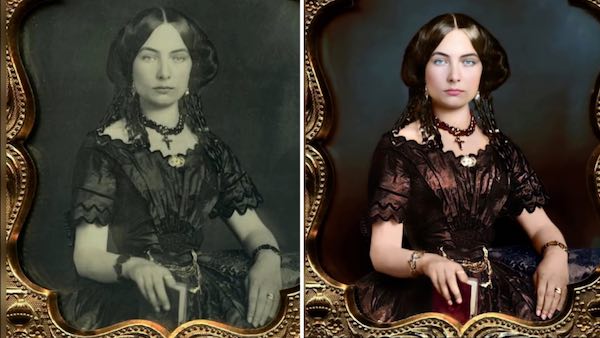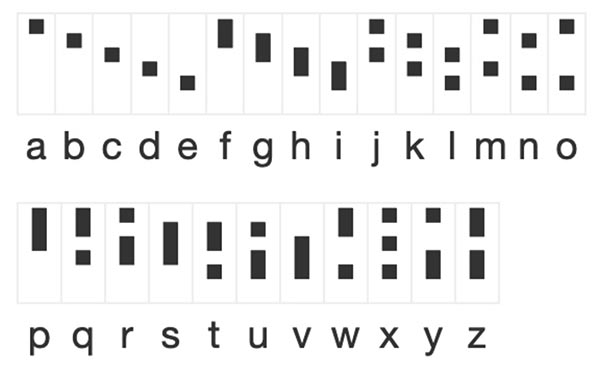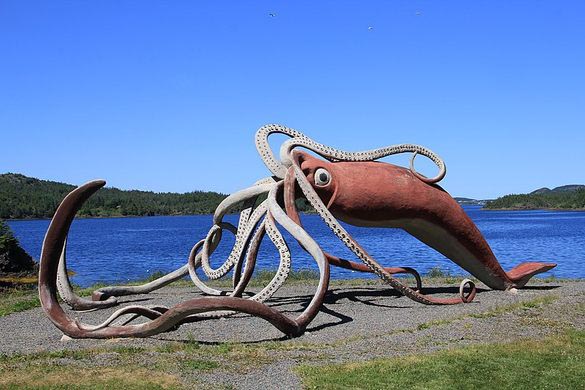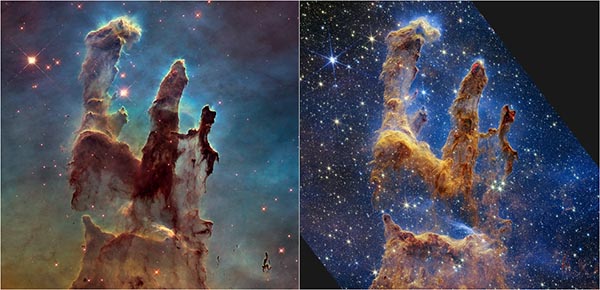AI-Yi-Yi Part the Infinity: Virtual Zombies
Via Laughing Squid:
Lorenzo Folli and Olga Shirnina of Mystery Scoop put together a fascinating compilation of historical 19th Century portraits that were digitally restored and brought to life using AI software. The restorative changes subtly take place as the camera lingers upon each image.

Check out the animation:
A little bit cool, a little bit creepy—like AI in general.
Sign Standards
Pre-dating today’s sign codes, perhaps, Print magazine has a pictorial feature on Paris, France’s “graphic standards manuals” from 1893. Graphic standards manuals specified design specs for things like street signs, house/building numbers, and other public signs and graphics.

The Streets Are Watching
As we always hasten to add in this space, we love signs. They are above all else useful and, when done correctly, can be aesthetically pleasing. But there are some signage trends we do find potentially worrying, and we are not alone. In this case, targeted digital billboards. Says Gizmodo:
Advertisers are using insights gleaned from targeted digital advertising and applying it to create physical billboards capable of serving up tailored advertisements catered to the types of people viewing them. If that concept sounds eerily familiar that’s because it’s precisely the type of physical targeted advertising vision Tom Cruise encounters when walking through a shopping center in Steven Spielberg’s 2002 sci-fi hit, The Minority Report.
This is of course not new technology, but it is becoming more popular, at least among advertisers.
These targeted billboard ads, which have existed for several years but are growing in popularity, are the subject of a new report from U.K., backed civil liberties group Big Brother Watch. The report, aptly called “The Streets are Watching,” provides a deep dive into ways a handful of companies use facial recognition enabled billboards to analyze the world around them and then use that data to serve up pedestrians personalized ads. Though advertisers favor the practice for its efficiency, the report argues the mass collection of users’ data poses an inherent privacy concern with high stakes risks. If normalized, the authors warn targeted billboard ads threaten to potentially do away with the idea of anonymously passing through a crowd.
The article and report go into more detail. Ultimately, the prevalence of these things will hinge on whether or not they work. If they don’t, no one will bother spending money on them. If they do, well, perhaps that indicates that people aren’t all that concerned about the loss of privacy.
Noise Annoys
We write on WhatTheyThink a fair amount about environmental design in the context of display graphics—that is, signs and other wide-format printing designed for interior spaces such as offices. The emphasis is virtually always on extending the brand throughout an interior space, but Core77 brings up one hitherto unexplored aspect of interior design: noise reduction.
Offices are notorious for their distractions and, as we’ve seen, designers have labored to address them for years, exploring solutions such as noise-cancelling headphones, office blinders, sound dampening visual barriers, zoom booths, and privacy-minded hoodie chairs.
Enter Kirei, a provider of materials for commercial interiors, which has taken on the challenge of noise reduction. (For example, the Air Baffle, a hanging sound barrier made of recycled Nikes, developed with designer Michael DiTullo.)
This time around DiTullo worked with Kirei’s new large format printer which enables the application of graphics to a wide range of products. The digital process allows for customization, which puts the acoustic material into double duty, for instance in a classroom situation where you need quiet AND school spirit simultaneously.

As they add, branding isn’t always needed or desired, so other patterns are possible.
While companies in the market for sound mitigation may be attracted to the technology's ability to splash branding throughout offices and halls, those in charge of speccing a space will find great utility in a product that visually matches wood or stone while avoiding their high sound reflection.
Dot Matrix
Via Boing Boing, a new font that “uses dots instead of letters.” They add, “in effect, [it’s] a substitution cipher using the minimum possible number of pixels to legibly (once you've learned it) represent the Latin alphabet.” It’s called Dotsies, and…why exactly?
Since latin letters (a, b, c, etc.) are optimized to be written by hand, they take up a lot of unnecessary space. Your eyes have to move at a frantic pace from left to right to read. The letters in Dotsies words smoosh together, so words look like shapes! Get more screen space! Save paper. Have a more comfortable reading experience.
Here is the alphabet:

And a sample paragraph using it:

Well, we’re sold.
Graphene Combats COVID
Was it a good week for graphene news? It’s always a good week for graphene news! Researchers at the University of Texas at Austin have developed an “antibody (Ab)-modified graphene field effect transistor (GFET)-based biosensor for precise and rapid influenza A virus (IAV) and severe acute respiratory syndrome coronavirus 2 (SARS-CoV-2) protein detection and differentiation.” Says Graphene-Info:
The biosensor design enabled isolated and targeted biochemical graphene channel functionalization with a common medium for analyte introduction and subsequent translation into a change in Ab-modified GFET conductance. Overall, the study findings highlighted using an Ab-modified GEFT-based biosensor for swift, ultraprecise, sensitive, specific, and cost-effective detection of diverse SARS-CoV-2 variants and IAV subtypes. The versatile biosensor LoD surpassed the minimal LoD needs of 163 fM and 16 aM for nasal and saliva samples, respectively, potentially decreasing the time required for test administration post-viral exposure.
Ripping Yarns
Do you knit with yarn? Have trouble color matching? Well, good news! Wayfinder is a new tool that lets you pick a color from a color wheel and it will find the best yarn match.
Includes yarns from: Adriafil, BC Garn, Blue Sky Fibers, Cascade Yarns, Ella Rae, Erika Knight, Jamieson's of Shetland, Juniper Moon Farm, Kelbourne Woolens, Knitting for Olive, Lang Yarns, Malabrigo, Rowan, Sublime, We Are Knitters, West Yorkshire Spinners, Wool and the Gang.
No more knitting in the dark!
Squid Pro Quo
In 1878, a living giant squid (Architeuthis dux)—rarely seen live—was found stranded offshore the Canadian fishing village of Glover’s Harbour, Newfoundland (formerly known as Thimble Tickle). Following this discovery, the village billed itself as the “Home of the Giant Squid.” From Atlas Obscura:
News of the giant squid spread and it became known as the “Thimble Tickle Specimen.” It was reported to be 55 feet (16.8 meters) long. The body measured 20-feet in length, and one tentacle was 35-feet long. Guinness World Records posthumously recognized the squid as a world record holder, and it is still considered the heaviest giant squid ever taken. It also holds the record for the largest animal eye at 15.75-inches in diameter. However, modern speculation is that the measurements were exaggerated or the result of postmortem stretching. There is, however, no doubt it was enormous.
In 2001, the village erected a 55-foot sculpture of the giant cephalopod—life-size.

Constructed from concrete over steel and wire mesh, the statue is 55-feet long and weighs over four tons. It was designed and built by Don Foulds, a fine arts teacher, and his students. It’s now part of the Giant Squid Interpretation Site that also includes a small museum, picnic area, and gift shop.
There is also an annual festival dedicated to the Thimble Tickle Specimen and in 2011 the sculpture was featured on a Canadian postage stamp.
Fly Me to the Mall
Those of who grew up on old science-fiction often find ourselves asking, “Where are our jetpacks?” “Where are our flying cars?” We can’t speak to the former, but as for the latter, via CNet, Silicon Valley startup Alef is launching, as it were, a flying car which it hopes to start selling by 2025.
Alef Aeronautics unveiled a prototype of its first Alef flying car on Wednesday, a $300,000 machine the company hopes will let well-heeled commuters both drive on roads and soar over traffic starting in 2025.
The Alef Model A is designed to have a driving range of 200 miles and a flying range of 110 miles. The startup also started taking orders at its website for the first models.

Stephen Shankland/CNET
The company showed a single passenger prototype of the Alef Model A and two flying prototypes called Alef Zero at a press conference at Draper University in San Mateo, California, home to one of the company's two Silicon Valley design centers. The Model A will be fitted with the eight propellers that should let it first fly in the coming months, Chief Executive Jim Dukhovny said in an interview, and ultimately could lead to a $35,000 Model Z in 2030 that requires only a drone license to operate.
We do have questions, such as, what regulations are going to be needed to ensure that we don’t end up with massively unfriendly skies? Shouldn’t some kind of lessons and/or licensing be involved in a flying car? How will any of this enforced? Let’s face it, people are horrible drivers even with only two axes of motion.
But the engineering challenges are big, and the regulatory challenges are perhaps even bigger as citizens, the Federal Aviation Administration and local governments wrestle with the idea of a sky populated by hundreds of personal aircraft and maybe delivery drones too.
Indeed.
Around the Webb, Part the Continuation: Back to the Pillars
The James Webb Space Telescope is up and running and recently turned its gaze toward the Pillars of Creation. One of the classic, awe-inspiring images from the Hubble was the 1995 capture of the Pillars of Creation, site of dense clouds of gas and dust where new stars are formed. The Webb Telescope has revisited the Pillars and revealed even more stars.

Caption from NASA: NASA’s Hubble Space Telescope made the Pillars of Creation famous with its first image in 1995, but revisited the scene in 2014 to reveal a sharper, wider view in visible light, shown above at left. A new, near-infrared-light view from NASA’s James Webb Space Telescope, at right, helps us peer through more of the dust in this star-forming region. The thick, dusty brown pillars are no longer as opaque and many more red stars that are still forming come into view. Credits: NASA, ESA, CSA, STScI; Joseph DePasquale (STScI), Anton M. Koekemoer (STScI), Alyssa Pagan (STScI).
From NASA:
Newly formed stars are the scene-stealers in this image from Webb’s Near-Infrared Camera (NIRCam). These are the bright red orbs that typically have diffraction spikes and lie outside one of the dusty pillars. When knots with sufficient mass form within the pillars of gas and dust, they begin to collapse under their own gravity, slowly heat up, and eventually form new stars.
What about those wavy lines that look like lava at the edges of some pillars? These are ejections from stars that are still forming within the gas and dust. Young stars periodically shoot out supersonic jets that collide with clouds of material, like these thick pillars. This sometimes also results in bow shocks, which can form wavy patterns like a boat does as it moves through water. The crimson glow comes from the energetic hydrogen molecules that result from jets and shocks. This is evident in the second and third pillars from the top – the NIRCam image is practically pulsing with their activity. These young stars are estimated to be only a few hundred thousand years old.
Take a video tour of the Pillars:
The things we can do.
L’Eggo My Noggo
Do you like waffles? Holiday drinking? If so, good news! Via Food & Wine, Kellogg’s is teaming with Gatlinburg, Tennessee’s Sugarlands Distilling Co. to develop “Eggo Nog” cream liqueur.
The result of that collaboration is a 40-proof combo of exactly what you love about both Eggos and eggnog. “It’s really heavy on deep flavors of churned cream, and cinnamon and nutmeg, which we feel pair really well with that perfectly toasted Eggo waffle,” Sugarlands Master Distiller Greg Eidam said.

Eggo Nog will be available in select retailers nationwide for the duration of this holiday season. To find a retailer near you, visit Sugarlands.com/EggoNog.
Hold the Mayo—Please!
Whenever a foodstuff begins as a joke, we tend to worry. Via Food & Wine:
Since its Kickstarter launch in 2010, Cards Against Humanity has grown into a nearly unavoidable phenomenon. The easiest way to describe the fill-in-the-blank card game is as an adult-humor spin on Apples to Apples, which shares a similar play mechanic. And over the years, Cards Against Humanity has continued to double-down on that humor angle with oddball promotional stunts including accepting donations to dig a hole in the ground for no reason and selling boxes of literally bull poop.
So what is their latest? A clam-flavored mayonnaise called Clam-O-Naise.
Launched exclusively at Target for $9.99, Clam-O-Naise is billed as "the world's only tangy, garlicky mayonnaise made with real clams!" In a tweet, the brand further explained, "We worked with a team of chefs and food scientists to bring you an actually-delicious mayo made with real clams. Inspired by the classic dish Clams Casino — with notes of garlic, bacon, and white wine — it's like 'hitting the jackpot' inside your mouth!"
Actually, that may not be so bad. We can wash it down with some Eggo Nog. (Stomach pump not included.)
This Week in Printing, Publishing, and Media History
October 17
1558: Poczta Polska, the Polish postal service, is founded.
1757: French entomologist and academic René Antoine Ferchault de Réaumur dies (b. 1683). After observing wasps building their nests, Réaumur was the first to propose making paper out of wood.
1771: Premiere in Milan of the opera Ascanio in Alba, composed by Mozart at age 15.
1814: Eight people die in the London Beer Flood.
1827: Bellini’s third opera, Il pirata, premieres in Milan.
1888: Thomas Edison files a patent for the Optical Phonograph (the first movie).
1907: Marconi begins the first commercial transatlantic wireless service.
1915: American playwright and screenwriter Arthur Miller born.
1919: RCA is incorporated as the Radio Corporation of America.
1979: American humorist and screenwriter S. J. Perelman dies (b. 1904).
October 18
1851: Herman Melville’s novel Moby-Dick is first published as The Whale.
1871: English mathematician and engineer, invented the mechanical computer Charles Babbage dies (b. 1791).
1922: The British Broadcasting Company (later Corporation) is founded by a consortium, to establish a national broadcasting service.
1931: Thomas Edison dies (b. 1847).
1947: American singer-songwriter and pianist Laura Nyro born.
1951: The Studio for Electronic Music was established at the West German Broadcasting facility in Cologne, making the first modern music studio.
1954: Texas Instruments announces the first transistor radio.
1964: English journalist, author, and programmer Charles Stross born.
1979: The Federal Communications Commission begins allowing people to have home satellite earth stations without a federal government license.
2019: NASA Astronauts Jessica Meir and Christina Koch take part in the first all-female spacewalk when they venture out of the International Space Station to replace a power controller.
October 19
1386: The Universität Heidelberg holds its first lecture, making it the oldest German university.
1745: Irish satirist and essayist Jonathan Swift dies (b. 1667).
1900: Max Planck discovers Planck’s law of black-body radiation.
1903: Swedish wrestler and actor Tor Johnson born.
1931: English intelligence officer and author John le Carré (né David John Moore Cornwell) born.
October 20
1632: English physicist, mathematician, architect, and designer of St Paul’s Cathedral Christopher Wren born.
1882: American actress Margaret Dumont born.
1882: Hungarian-American actor Bela Lugosi born.
1971: American rapper, producer, actor, and admirer of fine, digitally printed posters Snoop Dogg (né Calvin Cordozar Broadus Jr.) born.
1973: The Sydney Opera House is opened by Elizabeth II after 14 years of construction.
2020: Canadian-American stage magician and author James Randi dies (b. 1928).
October 21
1772: English poet, philosopher, and critic Samuel Taylor Coleridge born.
1833: Swedish chemist and engineer, inventor of dynamite and founder of the Nobel Prize Alfred Nobel born.
1879: Thomas Edison applies for a patent for his design for an incandescent light bulb.
1914: American mathematician, cryptographer, and author Martin Gardner born.
1929: American author and critic Ursula K. Le Guin born.
1940: The first edition of the Ernest Hemingway novel For Whom the Bell Tolls is published.
1959: In New York City, the Solomon R. Guggenheim Museum opens to the public.
1969: American novelist and poet Jack Kerouac dies (b. 1922).
1983: The meter is defined as the distance light travels in a vacuum in 1/299,792,458 of a second.
October 22
1565: French book collector Jean Grolier de Servières dies (b. 1479).
1875: First telegraphic connection in Argentina.
1879: Using a filament of carbonized thread, Thomas Edison tests the first practical electric incandescent light bulb (it lasted 13½ hours before burning out).
1883: The Metropolitan Opera House in New York City opens with a performance of Gounod’s Faust.
1884: The International Meridian Conference designates the Royal Observatory, Greenwich as the world's prime meridian.
1964: Hell is other awards: Jean-Paul Sartre is awarded the Nobel Prize in Literature, but turns down the honor.
October 23
1959: “Weird Al” Yankovic born.
2012: After 38 years, the world’s first teletext service (BBC’s Ceefax) ceases broadcast due to Northern Ireland completing the digital switchover.










Discussion
Join the discussion Sign In or Become a Member, doing so is simple and free